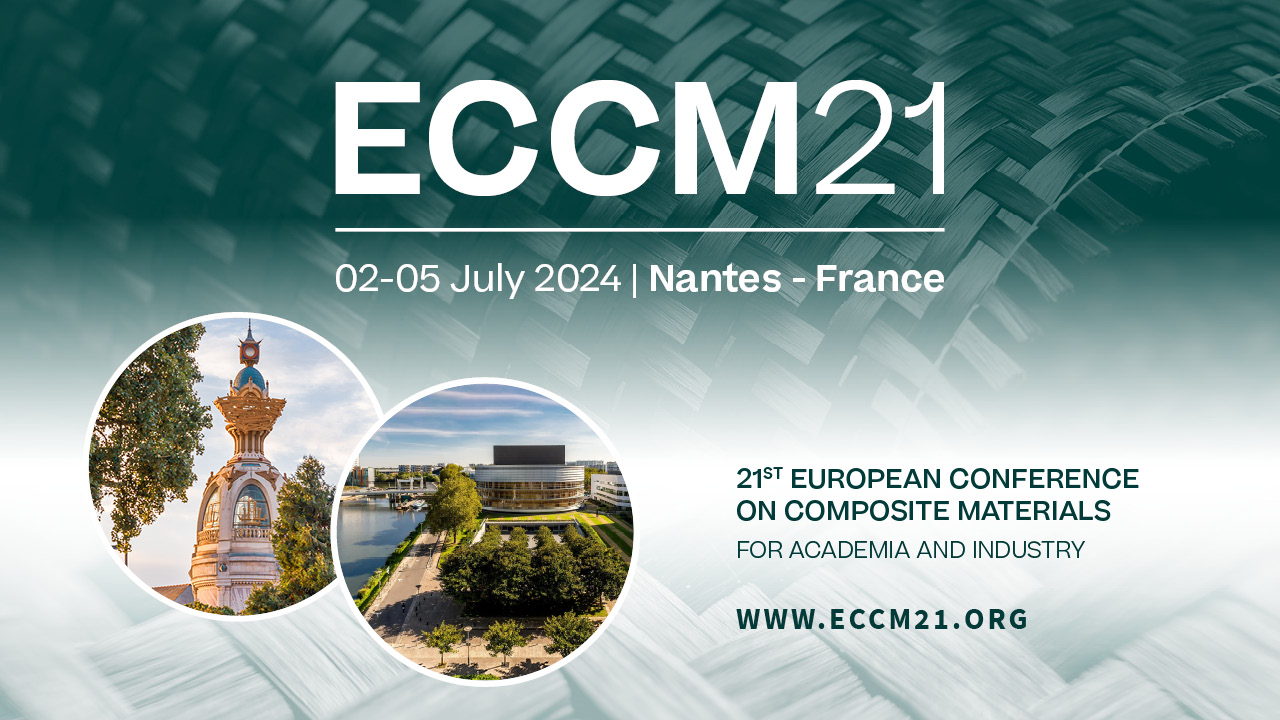An efficient approach for mesoscale virtual permeability predictions using realistic fiber geometry extracted via micro-X-ray computed tomography.
Topic(s) : Special Sessions
Co-authors :
Debabrata DEBABRATA ADHIKARI (DENMARK), Jesper JESPER JOHN LISEGAARD (DENMARK), Jesper JESPER HENRI HATTEL , Sankhya SANKHYA MOHANTYAbstract :
Creating a realistic 3D porous computational space for simulating virtual permeability relies on X-ray computed tomography (X-CT) data obtained from actual fabric layups. This method offers notable benefits over assuming an idealized porous structure, enhancing accuracy in experimental characterization. High-fidelity numerical simulations derived from real X-CT data surpass the accuracy of analytical models that correlate the permeability of idealized fiber structures to factors like compaction pressure, fiber volume fraction, and orientation in fiber packing. These analytical techniques often fall short due to discrepancies between real fiber orientations and stacking observed during experiments, differing from the assumed idealized structures in analytical models. Previous virtual permeability predictions have predominantly utilized idealized yarn preform structures generated by standardized software like TexGen or WiseTex, where the nodal location from the X-CT scan forms the foundation for the suggested idealized yarn configuration.
In this study, we explore the impact of X-CT analysis on virtual permeability predictions. More specifically, we devise a comprehensive workflow, beginning with extracting preform structures from X-CT data. Our approach involves structured-tensor analysis to derive the fiber vector class based on factors like fiber diameters, voxel size parameters, and eigenvector analysis. We have fine-tuned the noise and integration scale in the analysis to optimize computational efficiency, aiming to reduce the required mesh elements for accurate fiber class resolution. To prepare for flow simulations, we have developed voxel mesh elements for fiber domains using specialized algorithms on the open-source platform DREAM3D. These elements are then transformed into the necessary block mesh structure for resin infusion simulations in OpenFOAM. Our mesoscale resin infusion simulations employ a global Darcy-Forchheimer model, with local orientations and permeability assigned to individual fiber classes based on structured tensor analysis and Gebert’s model, respectively. Additionally, we assume a bidirectional flow transfer between porous fiber grains and the matrix's free domain.
We investigate the impact of X-CT data thresholding on constructing the preform's computational domain, starting from a UD configuration and progressing to more intricate NCF fiber packing. Conducting sensitivity analyses on voxel size and thresholding methods helps assess their influence on predicted mesoscale permeability. Our proposed method generates a realistic computational mesh for flow simulations and offers an efficient approach for predicting mesoscale virtual permeability from X-CT data of real composite layups.
In this study, we explore the impact of X-CT analysis on virtual permeability predictions. More specifically, we devise a comprehensive workflow, beginning with extracting preform structures from X-CT data. Our approach involves structured-tensor analysis to derive the fiber vector class based on factors like fiber diameters, voxel size parameters, and eigenvector analysis. We have fine-tuned the noise and integration scale in the analysis to optimize computational efficiency, aiming to reduce the required mesh elements for accurate fiber class resolution. To prepare for flow simulations, we have developed voxel mesh elements for fiber domains using specialized algorithms on the open-source platform DREAM3D. These elements are then transformed into the necessary block mesh structure for resin infusion simulations in OpenFOAM. Our mesoscale resin infusion simulations employ a global Darcy-Forchheimer model, with local orientations and permeability assigned to individual fiber classes based on structured tensor analysis and Gebert’s model, respectively. Additionally, we assume a bidirectional flow transfer between porous fiber grains and the matrix's free domain.
We investigate the impact of X-CT data thresholding on constructing the preform's computational domain, starting from a UD configuration and progressing to more intricate NCF fiber packing. Conducting sensitivity analyses on voxel size and thresholding methods helps assess their influence on predicted mesoscale permeability. Our proposed method generates a realistic computational mesh for flow simulations and offers an efficient approach for predicting mesoscale virtual permeability from X-CT data of real composite layups.

